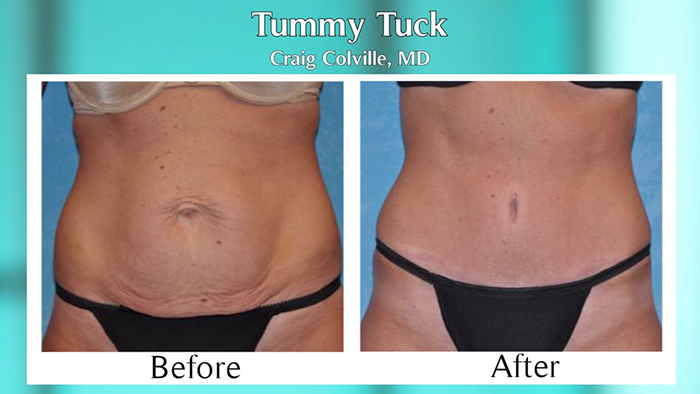Ask any woman how she feels about her lower ab area and most will complain that it’s too large. Disparaging terms like “pouch,” “spare tire,” and “muffin top” are typically thrown around among girlfriends to describe that specific softness around the middle that develops with age, pregnancy, and hormonal changes. And to make matters worse, it’s often resistant to diet and exercise.
An abdominoplasty – or tummy tuck – is a surgical procedure that eradicates this pouch, delivering the smooth, flat stomach of your youth. Dr. Craig Colville of Toledo, OH discusses what you can expect from your tummy tuck procedure and how it can completely re-contour your entire torso.
What is a Tummy Tuck?
“A tummy tuck is an operation to take care of the lower abdomen,” explains Colville. His female patients are particularly bothered by that bit that hangs over their underwear and/or jeans, often grabbing it when they’re talking to him during the consultation. An abdominoplasty is a surgical procedure to remove the excess skin and fat from the lower abdominals, tighten the underlying muscles if needed, and pull down the skin from the upper abdominals for a smooth, tight stomach.
Ideally, the scar will be hidden by your underwear or bathing suit. It may be short, but it’s usually hip to hip and sometimes extends around the body. It really depends on how much skin and fat need to be removed. There will also be an incision around your belly button.
There are two things to keep in mind when you are considering an abdominoplasty. Many patients come in feeling guilty because they think they haven’t exercised or dieted enough when, in reality, diet and exercise can only take you back to your baseline. If your skin has been stretched because of pregnancy or weight gain/loss, it’s loose and you can not diet and exercise your skin back to tight. Also, when you exercise, you can make your abdominal wall stronger but not necessarily flatter. If muscles have been stretched because of multiple pregnancies, and infinite amount of crunches and diet will not solve the problem
It is important to keep in mind, though, that a tummy tuck is not a weight-loss procedure. “It’s all about body contour,” explains Colville. When he is looking at an abdominoplasty patient, he is always addressing the entire torso, determining what’s a skin problem, what’s a fat problem, and what’s a muscle wall problem. The torso is three dimensional so even though the patient may be talking about their lower abdomen, the problem may extend up into the upper abdomen, maybe even into the breasts, back and bra line.
What to Expect?
Anytime that you have surgery, you are going to have a scar. The goal with a tummy tuck is to put the scar as low as possible. Dr. Colville always shows his patients photos of what their scars will look like so that they know exactly what to expect. Any incision discomfort goes away pretty quickly. The discomfort that lingers is directly related to how much tightening was done to the underlying muscle wall, but most patient are back to work within 1-2 weeks.
There have also been huge advancements in terms of the anesthetic used during a tummy tuck. Dr. Colville likes Exparel because he finds that patients wake up much more comfortable. So even though the recovery from a tummy tuck may be a bit more intense than that of a breast augmentation, he’s never had a patient come in and say, ‘It’s awful’. In fact, the tummy tuck has an extremely high patient satisfaction rating because the patient can immediately feel the change once she stands up and takes a look in the mirror. “It’s a life changer,” says Colville.


















Facebook
Twitter
Instagram
YouTube
RSS